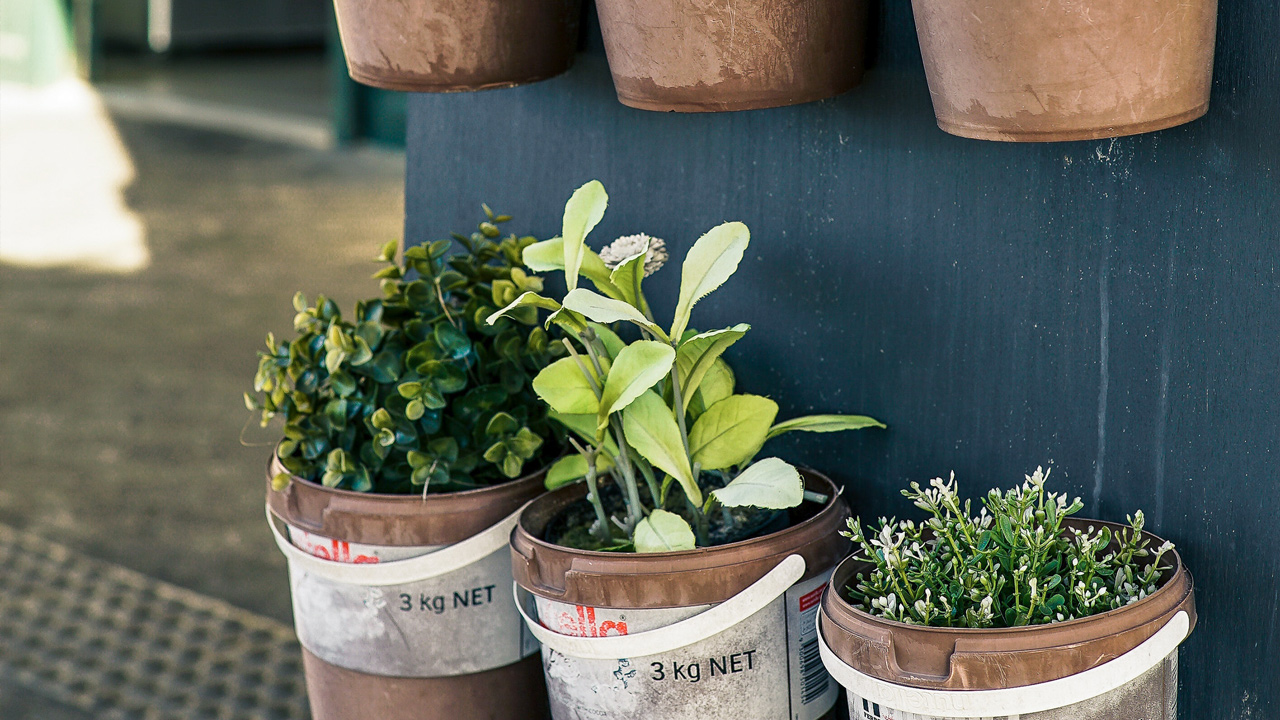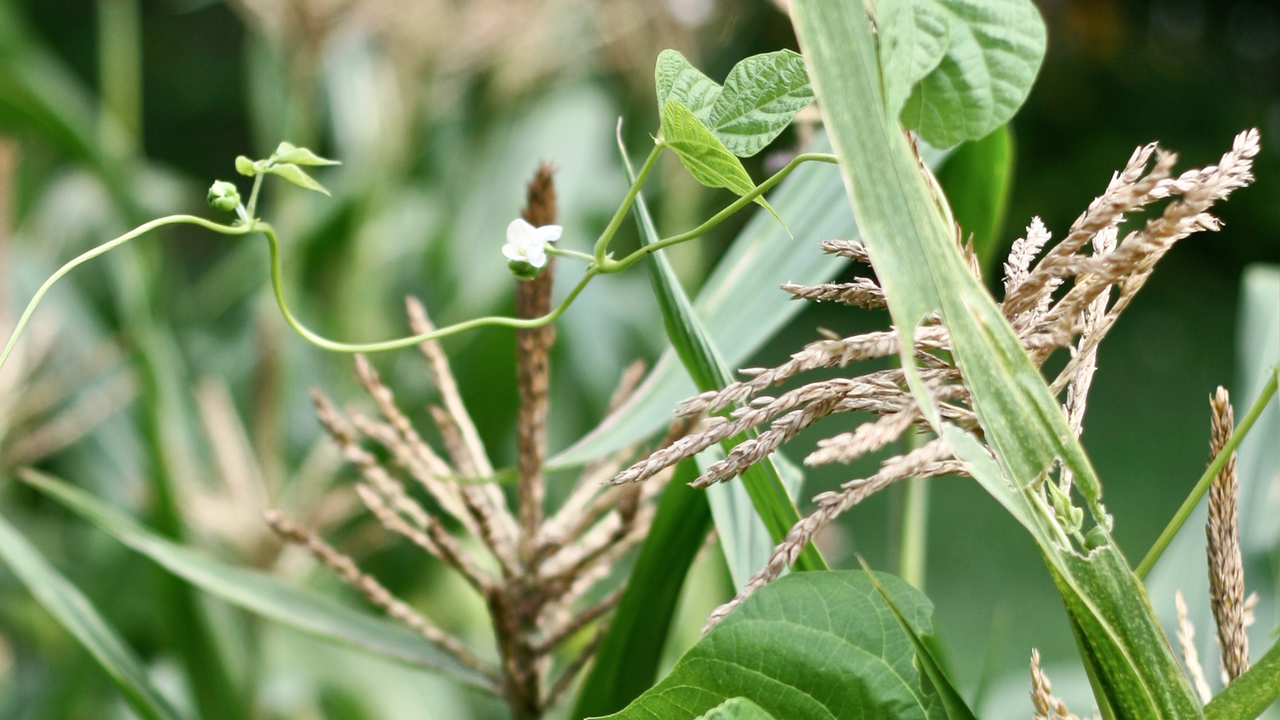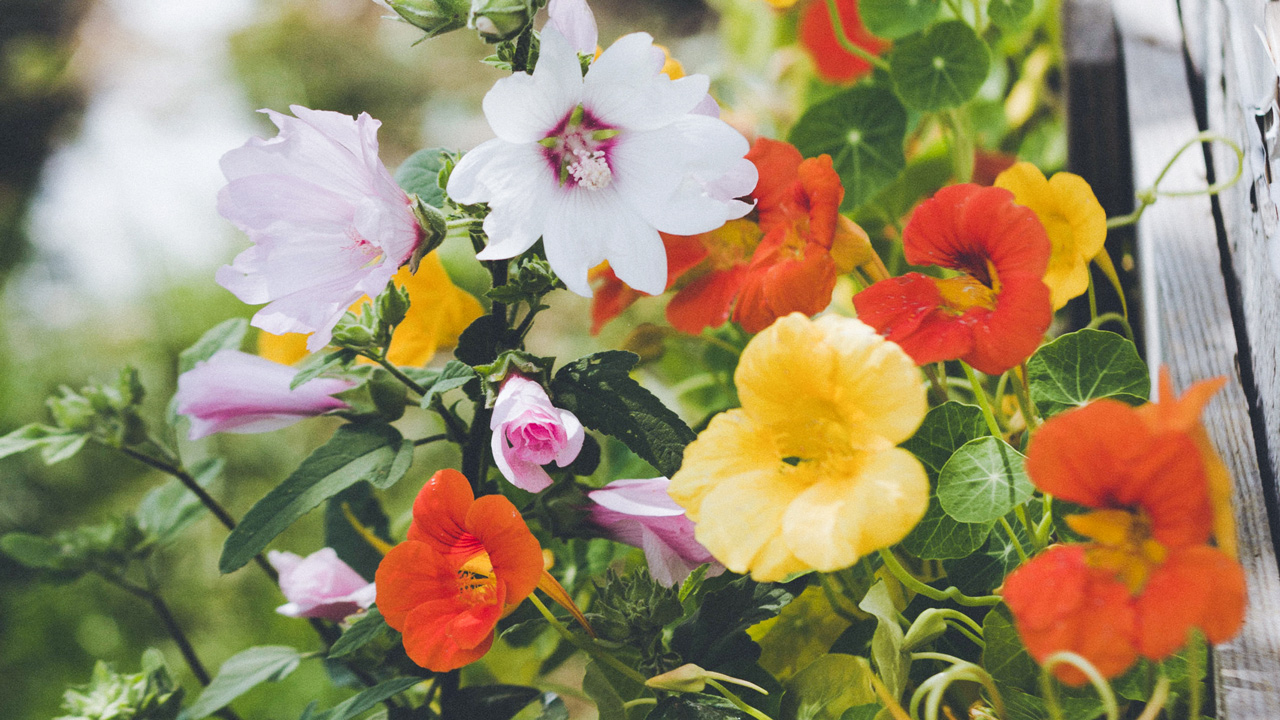
There’s something so rewarding about growing your own food. But in an urban setting, space can sometimes feel like a limiting factor. Fortunately, with a little planning and these space-efficient techniques, even the smallest suburban space can produce a big harvest.

Make Every Space Count // Vertical + Container Gardening
If you have a space on your patio or balcony that gets good sunlight, consider growing food in containers filled with high quality potting mix. Wall-mounted containers and hanging baskets are a great way to use your vertical space and get more plants into a limited area.
Crops that climb or spread – like pole beans, cucumbers, melons, and squash – can be trained to do so on trellises, fences, archways, and other vertical structures in the garden too.
Go for Big Producers // High-Yielding Plants
A simple way to get the most out of a smaller garden space is to choose varieties that naturally yield the most food per plant. Big producers like this include pole beans, tomatoes, cucumbers, peas, and the notoriously ambitious zucchini.

Get Cozy // Intensive Spacing
Sometimes called square-foot gardening or intensive spacing, planning your vegetable garden in a block pattern – rather than straight rows with space to walk between – can dramatically increase the number of plants you can fit in your space. Kansas State offers a simple example using beans planted four inches apart. If you plant your seeds in a traditional, single row, you’ll only fit four seeds across a square-foot area. But if planted in a grid, you could fit sixteen seeds within the same space. Another benefit to closely planted gardens is their tendency to shade out weeds that otherwise grow between traditional rows.
For plants to thrive in such close quarters, it’s important to give them the best possible environment for growth. This often means rich, well-draining soil. For that reason, intensive spacing is often practiced in a raised bed where a frame sits above ground level, creating a box that can be filled with an ideal soil mix. Raised beds and close spacing also eliminate the need to walk between rows which compacts the soil.
Take Turns // Succession Planting
In a vegetable garden, there are early-, mid-, and late-season varieties that thrive at different times in the growing season. Consequently, the same piece of ground can host a series of crops from one end of the season to the other.
Succession planting can take a few different forms. One way to plant successively is to sow some of your seeds early – for example, a single variety of lettuce – then in a couple weeks, sow more, and in a couple weeks, more again. As the first crop of lettuce matures and then fades, another younger crop is there to keep the salad coming.
Alternatively, different varieties of the same vegetable may mature at different times in the season. For instance, there are early-, mid-, and late-season varieties of tomato, corn, peas, and beans. When the early beans give out, the mid-season ones are ready to take over. And of course, you can follow an early vegetable with a completely different, later-maturing type too – early peas followed by late bush beans planted in the same spot is one example.

Share Space Now // Intercropping
In contrast with succession planting, intercropping means sharing the same space at the same time. It’s a matter of pairing different attributes like maturity rate, height, and environmental requirements so that the partnered plants benefit from each other’s presence without much conflict.
The most famous example of intercropping is the “three sisters” – a Native American tradition where corn, pole bean, and squash are planted together. The tall corn creates a support for the climbing bean, the squash shades the ground to conserve soil moisture and suppress weeds, and the beans fix soil nitrogen for everybody.
In other pairings, tall plants like corn, tomatoes, or sunflowers might shade a garden, but that doesn’t bother part-shade varieties – like spinach, Swiss chard, or beets – planted right at their base. And fast-growing vegetables like beans, lettuce, and green onions can be planted right next to slow growers like cabbage or cauliflower – by the time the slow-pokes mature, the speedier ones are done and out of the scene.
Photo by Chiot’s Run

Trade Spaces Later // Rotation Planting
Another way to support higher yields in small garden spaces is to avoid planting the same family of vegetables in the same spot every year. Research shows that rotating crops so that one plant family occupies a given location only every three or four years has positive effects on yields. That’s because families of closely related species tend to be susceptible to the same damaging pathogens or insects and may deplete the soil of the same nutrients. This leaves the next year’s crop at a disadvantage if planted in the same area.
One common family includes tomatoes and their cousins the peppers, potatoes, and eggplant. Another includes onions, garlic, and leeks. And cabbage is in the same family as broccoli, kale, and Brussels sprouts. Rotating families within the garden each year allows the soil to replenish spent nutrients and keeps insect pests and pathogens from surviving in one location from year to year.

Rethink Boundaries // Vegetables in the Landscape
Gardens are for lettuce, and landscapes are for hydrangeas, right? Not necessarily. If space for a dedicated vegetable garden is limited, take closer look at the space around your landscape plants. Couldn’t a few of your more decorative herbs and veggies comingle among your perennials and shrubs? With their interesting colors and textures, food crops like purple pole beans, sage, Swiss chard, and kale can be just as attractive as many of our ornamentals. And don’t forget edible flowers like nasturtiums, pansies, and lavender – their beauty is always welcome in any sunny spot.
Make the Most of Every Inch
Your space may be small, but that doesn’t mean your garden has to be. By rethinking your garden in terms of space and time, you can coax a big harvest out of a modest piece of property. If you’re not sure where to start, have a plan you’d like to run past the team, or just need suggestions for some fabulous new vegetables to grow this year, stop by the Greenhouse. We’re getting anxious for spring too, and we’d be glad to help you get started.


